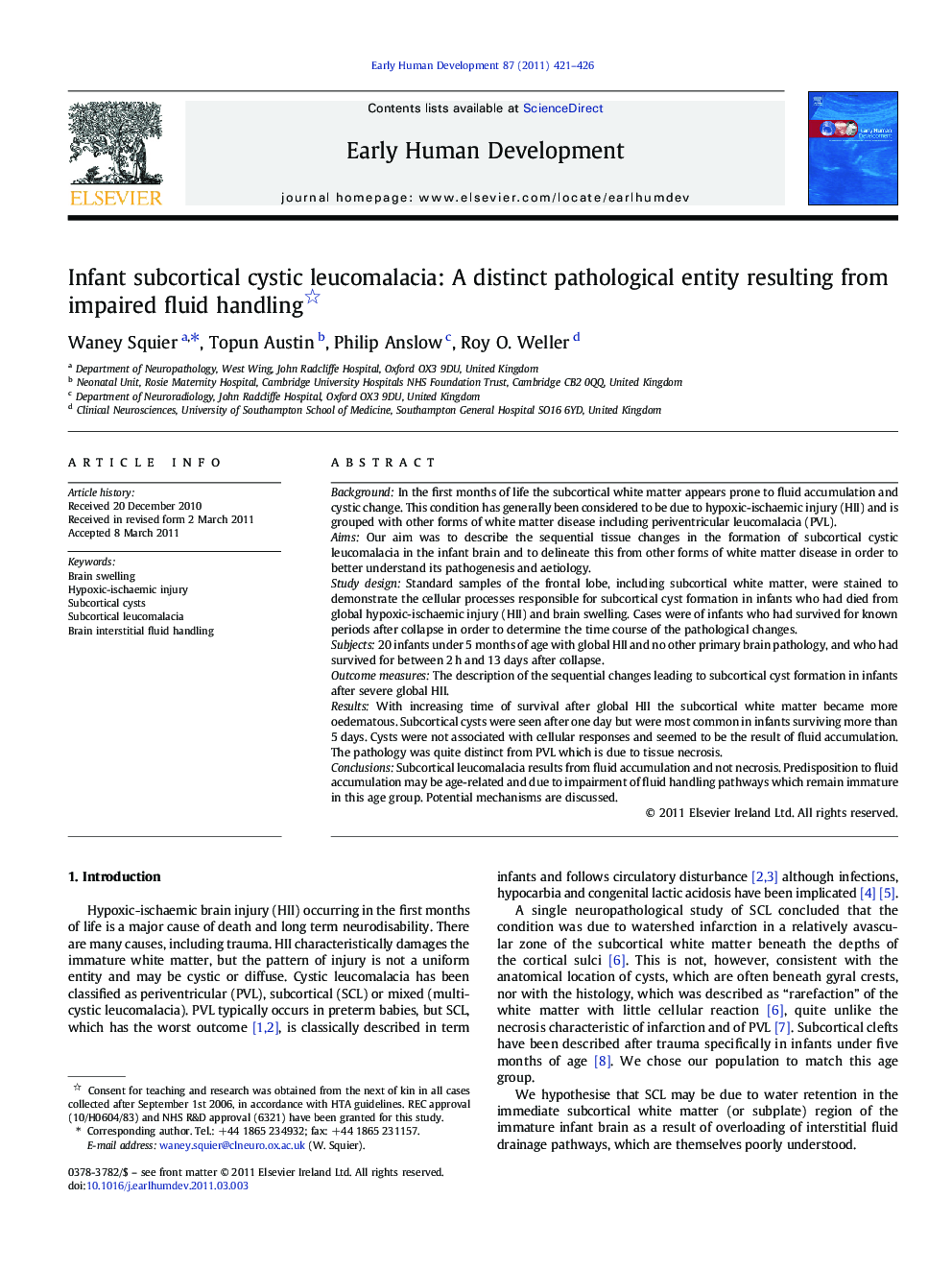| Article ID | Journal | Published Year | Pages | File Type |
|---|---|---|---|---|
| 3917526 | Early Human Development | 2011 | 6 Pages |
BackgroundIn the first months of life the subcortical white matter appears prone to fluid accumulation and cystic change. This condition has generally been considered to be due to hypoxic-ischaemic injury (HII) and is grouped with other forms of white matter disease including periventricular leucomalacia (PVL).AimsOur aim was to describe the sequential tissue changes in the formation of subcortical cystic leucomalacia in the infant brain and to delineate this from other forms of white matter disease in order to better understand its pathogenesis and aetiology.Study designStandard samples of the frontal lobe, including subcortical white matter, were stained to demonstrate the cellular processes responsible for subcortical cyst formation in infants who had died from global hypoxic-ischaemic injury (HII) and brain swelling. Cases were of infants who had survived for known periods after collapse in order to determine the time course of the pathological changes.Subjects20 infants under 5 months of age with global HII and no other primary brain pathology, and who had survived for between 2 h and 13 days after collapse.Outcome measuresThe description of the sequential changes leading to subcortical cyst formation in infants after severe global HII.ResultsWith increasing time of survival after global HII the subcortical white matter became more oedematous. Subcortical cysts were seen after one day but were most common in infants surviving more than 5 days. Cysts were not associated with cellular responses and seemed to be the result of fluid accumulation. The pathology was quite distinct from PVL which is due to tissue necrosis.ConclusionsSubcortical leucomalacia results from fluid accumulation and not necrosis. Predisposition to fluid accumulation may be age-related and due to impairment of fluid handling pathways which remain immature in this age group. Potential mechanisms are discussed.
